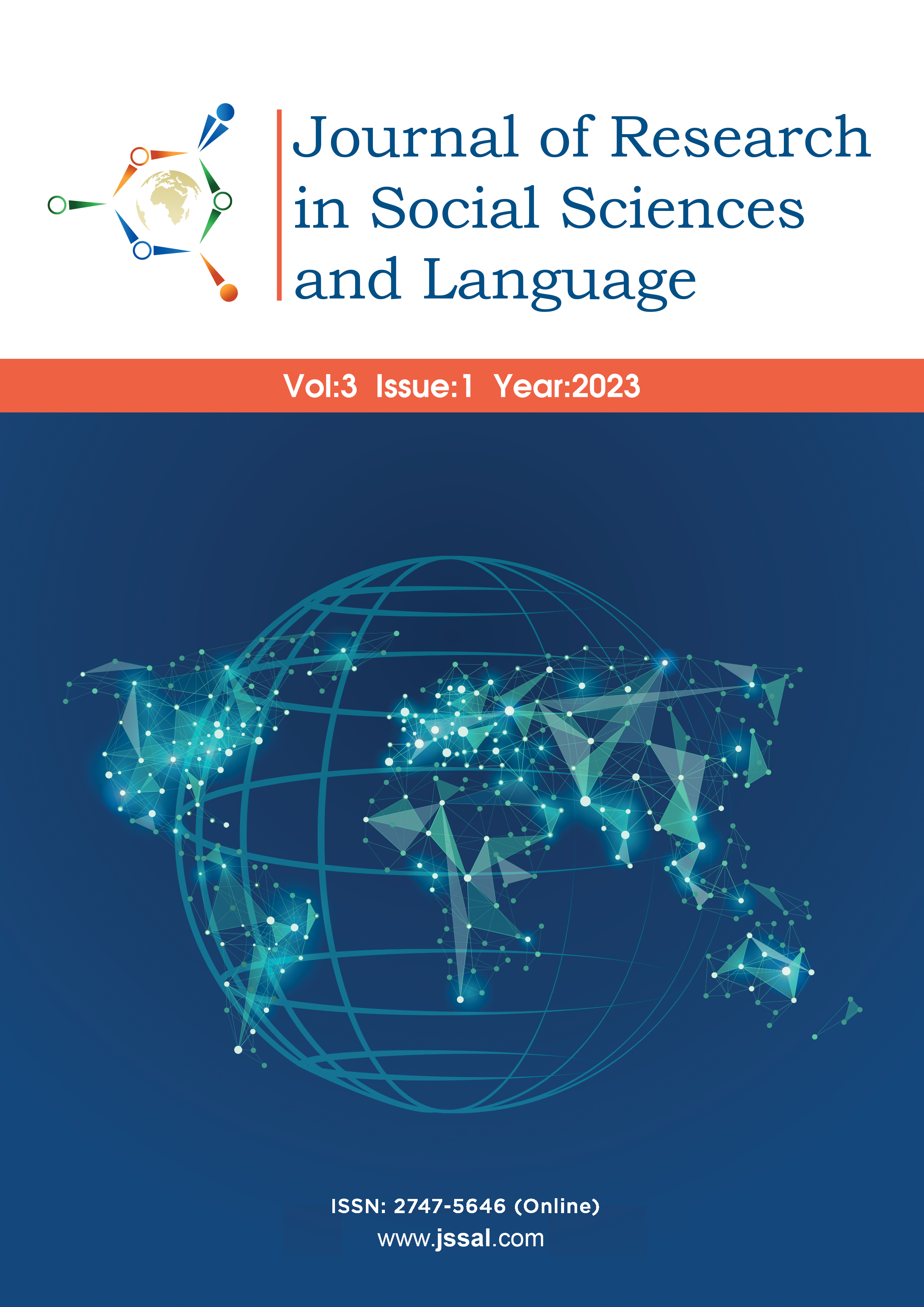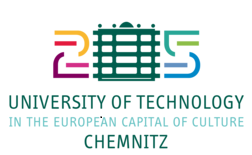Incidental Learning of the Target Language System through a Semi-artificial Language
DOI:
https://doi.org/10.71514/jssal/2023.104Keywords:
Incidental learning, semi-artificial language systems, implicit knowledge, explicit knowledge, language awarenessAbstract
In recent years, there have been studies on incidental learning utilizing semi-artificial languages at the sentence level focusing on specific grammatical features. This study investigates whether extended exposure to texts in a semi-artificial language would result in incidental learning of the target language system. A pretest/posttest experimental design was adopted. Learners in the experimental group were exposed to texts both in English and a semi-artificial language system while learners in the control group were only exposed to texts in English. A grammaticality judgment test, error analysis, and semi-structured interviews were used to evaluate learning and learners’ perceptions of their own learning. The experimental group scored significantly higher in the post-test than the pre-test in the grammaticality judgment test while the control group did not. Error analysis did not result in a significant difference across two writing tasks in either group in the number of errors, though the experimental group demonstrated a decrease in four error categories as opposed to one by the control group. The interview data showed an increased awareness of the structural difference between the two languages and also the target language system. Results may indicate that using semi-artificial languages facilitates awareness and learning of the L2 input.
Downloads
References
Ammar, A., Lightbown, P. M. & Spada, N. (2010). Awareness of L1/L2 differences: Does it matter? Language Awareness, 19(2), 129-146. https://doi.org/10.1080/09658411003746612.
Atmaca, Ç. (2016). Error Analysis of Turkish EFL Learners: A Case Study. Procedia - Social and Behavioral Sciences, 232, 234-241. https://doi.org/10.1016/j.sbspro.2016.10.007
Bell, P. K. & Collins, L. (2009). ‘It's vocabulary’/‘it's gender’: learner awareness and incidental learning. Language Awareness, 18(3-4), 277-293. https://doi.org/10.1080/09658410903197280
Bialystok, E. (1997). The structure of age: In search of barriers to second language acquisition. Second Language Research, 13(2), 116-137, https://doi.org/10.1191/026765897677670241
Bialystok, E. & Hakuta, K. (1999). Confounded age: Linguistic and cognitive factors in age differences for second language acquisition. In D. Birdsong (Ed.), Second language acquisition and the critical period hypothesis (pp. 161-181). Lawrence Erlbaum.
Boers, F. (2018). Intentional versus incidental learning. In J. I. Liontas (Ed.), The TESOL encyclopedia of English language teaching (pp. 1-6). John Wiley & Sons, Inc. https://doi.org/10.1002/9781118784235.eelt0074
Bruton, A. (2009). Designing research into the effects of grammar correction in L2 writing: Not so straightforward. Journal of Second Language Writing, 18, 136-140. https://doi.org/10.1016.j.jslw.2009.02.005.
Corder, S. P. (1981). Error analysis and interlanguage. Oxford: Oxford University Press.
Cook, V. (2008). Second language learning and language teaching. Hodder Education.
Dang, T. N. Y., & Long, X. (2023). Online News as a Resource for Incidental Learning of Core Academic Words, Academic Formulas, and General Formulas. TESOL Quarterly. Advance online publication. https://doi.org/10.1002/tesq.3208
Day, R. R., Omura, C. & Hiramatsu, M. (1991). Incidental EFL vocabulary learning and reading. Reading in a Foreign Language, 7(2), 541-551.
Dekeyser, R. M. (2000). The robustness of critical period effects in second language acquisition. Studies in Second Language Acquisition, 22(4), 499-533.
Denhovska, N. & Serratrice, L. (2017). Incidental learning of gender agreement in L2. Journal of Psycholinguistic Research, 46(5), 1187-1211. https://doi.org/10.1007/s10936-017-9487-x
Denhovska, N., Serratrice, L. & Payne, J. (2016). Acquisition of second language grammar under incidental learning conditions: The role of frequency and working memory. Language Learning, 66(1), 159-190. https://doi.org/10.1111/lang.12142
Denhovska, N., Serratrice, L. & Payne, J. (2018). Frequency and working memory effects in incidental learning of a complex agreement pattern. Lingua, 207, 49-70.
https://doi.org/10.1016/j.lingua.2018.02.009
Ellis, N. (2011). Implicit and explicit SLA and their interface. In C. Sanz & R. P. Leow (Eds.), Implicit and explicit language learning: Conditions, processes, and knowledge in SLA and bilingualism (pp. 35-47). Georgetown University Press.
Erkaya, O. R. (2012). Vocabulary and L1 interference – error analysis of Turkish students' English essays. MEXTESOL Journal, 36(2), 1-11.
Ferris, D. (1999). The case for grammar correction in L2 writing classes: A response to Truscott (1996). Journal of Second Language Writing, 8(1), 1-11. https://doi.org/10.1016/S1060-3743(99)80110-6.
Ferris, D. R. (2004). The “grammar correction” debate in L2 writing: Where are we, and where do we go from here? (and what do we do in the meantime . . .?). Journal of Second Language Writing, 13, 49-62. https://doi.org/10.1016/j.jslw.2004.04.005.
Flege, J. E. (1999). Age of learning and second language acquisition. In D. Birdsong (Ed.), Second language acquisition and the critical period hypothesis (pp. 101-131). Lawrence Erlbaum.
Francis, P. A., Schmidt, G. L., Carr, T. H. & Clegg, B. A. (2009). Incidental learning of abstract rules for non-dominant word orders. Psychological Research, 73(1), 60-74.
https://doi.org/10.1007/s00426-008-0138-6
Grey, S., Williams, J. N., & Rebuschat, P. (2014). Incidental exposure and L3 learning of morphosyntax. Studies in Second Language Acquisition, 36(4), 611–645. https://doi.org/10.1017/S0272263113000727
Hamrick, P. (2013). Development of conscious knowledge during early incidental learning of L2 syntax (Unpublished doctoral dissertation). Georgetown University, Washington, DC.
Hamrick, P. (2015). Declarative and procedural memory abilities as individual differences in incidental language learning. Learning and Individual Differences, 44, 9-15. https://doi.org/10.1016/j.lingua.2018.02.009
Hamrick, P. & Sachs, R. (2018). Establishing evidence of learning in experiments employing artificial linguistic systems. Studies in Second Language Acquisition, 40(1), 153-169. https://doi.org/10.1017/S0272263116000474.
Hulstijn, J. H. (1992). Retention of inferred and given word meanings: Experiments in incidental vocabulary learning. In P. J. L. Arnaud & H. Béjoint (Eds.), Vocabulary and applied linguistics (pp. 113-125). Macmillan Academic and Professional Ltd.
Hulstijn, J. H. (2003). Incidental and intentional learning. In C. Doughty & M. H. Long (Eds.), The handbook of second language acquisition (pp. 349–381). Blackwell
Hulstijn, J. H., & Trompetter, P. (1998). Incidental learning of second language vocabulary in computer-assisted reading and writing tasks. In D. Albrechtsen, B. Henriksen, I. M. Mees, & E. Poulsen (Eds.), Perspectives on foreign and second language pedagogy (pp. 191-200). Odense University Press.
Iverson, P., Kuhl, P. K., Akahane‐Yamadac, R., Dieschd, E., Tohkurae, Y., Kettermannf, A., & Siebert, C. (2003). A perceptual interference account of acquisition difficulties for non‐native phonemes. Cognition, 87(1), B47–B57. https://doi.org/10.1016/S0010‐0277(02)00198–1
Johnson, J. S. & Newport, E. L. (1989). Critical period effects in second language learning: The influence of maturational state on the acquisition of English as a second language. Cognitive Psychology, 21(1), 60-99. https://doi.org/10.1016/0010-0285(89)90003-0
Kanik, M. (2018). Maturational constraint or system preservation. International Journal of Applied Linguistics, 28(3), 451-464. https://doi.org/10.1111/ijal.12219
Keshavarz, M. H. (2015). Contrastive analysis and error analysis, and interlanguage. Rahnama Press.
Kırkgöz, Y. (2010). An analysis of written errors of Turkish adult learners of English. Procedia - Social and Behavioral Sciences, 2(2), 4352-4358. https://doi.org/10.1016/j.sbspro.2010.03.692
Kirmizi, O., Karci B. (2017). An investigation of Turkish higher education EFL learners’ linguistic and lexical errors. Educational Process: International Journal, 6(4), 35-54. https://doi.org/10.22521/edupij.2017.64.3
Kupferberg, I. (1999). The cognitive turn of contrastive analysis: Empirical evidence. Language Awareness, 8(3-4), 210-222. https://doi.org/10.1080/09658419908667130.
Kupferberg, I. & Olshtain, E. (1996). Explicit contrastive instruction facilitates the acquisition of difficult L2 forms. Language Awareness, 5(3-4), 149-165. https://doi.org/10.1080/09658416.1996.9959904.
Marinova-Todd, S. H., Marshall, D. B. & Snow, C. E. (2000). Three misconceptions about age and L2 learning. TESOL Quarterly, 34(1), 9-34. https://doi.org/10.2307/3588095.
Mikulecky, B. S. & Jeffries, L. (2007). Advanced reading power. Pearson Education, Inc.
Pierce, L. J., Chen, J., Delcenserie, A., Genesee, F., & Klein, D. (2015). Past experience shapes ongoing neural patterns for language. Nature Communications, 6(10073), 1–11. https://doi.org/10.1038/ncomms10073
Rebuschat, P., Hamrick, P., Sachs, R., Riestenberg, K., & Ziegler, N. (2013). Implicit and explicit knowledge of form-meaning connections: Evidence from subjective measures of awareness. In J. M. Bergsleithner, S. N. Frota, & J. K. Yoshioka, (Eds.), Noticing and second language acquisition: Studies in honor of Richard Schmidt (pp. 255–275). National Foreign Language Resource Center.
Rebuschat, P., & Williams, J. N. (2012). Implicit and explicit knowledge in second language acquisition. Applied PsychoLinguistics, 33(4), 829–856. https://doi.org/10.1017/S0142716411000580
Rogers, J. (2017). Awareness and learning under incidental learning conditions. Language Awareness, 26(2), 113–133. https://doi.org/10.1080/09658416.2017.1287711
Rogers, J., Révész, A. & Rebuschat, P. (2015). Challenges in implicit learning research: Validating a novel artificial language. In P. Rebuschat (Ed.), Implicit and explicit learning of languages (pp. 275-300). John Benjamins.
Rogers, J., Révész, A. & Rebuschat, P. (2016). Implicit and explicit knowledge of inflectional morphology. Applied Psycholinguistics, 37(4), 781-812. https://doi.org/10.1017/S0142716415000247.
Russell, J. & Spada, N. (2006). The effectiveness of corrective feedback for the acquisition of L2 grammar: A meta-analysis of the research. In J. M. Norris & L. Ortega (Eds.), Synthesizing research on language learning and teaching (pp. 133-164). John Benjamins. https://doi.org/10.1075/lllt.13.09val.
Schmidt, R. (1990). The role of consciousness in second language learning. Applied Linguistics, 11(2), 129-158. https://doi.org/10.1093/applin/11.2.129.
Schmidt, R. (1994). Deconstructing consciousness in search of useful definitions for applied linguistics. AILA Review, 11, 11-26.
Sebastián‐Gallés, N., Sagrario, E., & Bosch, L. (2005). The influence of initial exposure on lexical representation: Comparing early and simultaneous bilinguals. Journal of Memory and Language, 52(2), 240–255. https://doi.org/10.1016/j.jml.2004.11.001
Tagarelli, K. M., Borges Mota, M. & Rebuschat, P. (2015). Working memory, learning conditions and the acquisition of L2 syntax. In Z. Wen, M. Borges Mota & A. McNeill (Eds.), Working memory in second language acquisition and processing (pp. 224-247). Multilingual Matters.
Taşcı, S. & Ataç, B. A. (2018). Written grammatical errors of Turkish adult learners of English: An analysis. Uluslararası Sosyal Bilimler Eğitimi Dergisi, 4(1), 1-13.
Truscott, J. (1996). The case against grammar correction in L2 writing classes. Language Learning, 46(2), 327-369. https://doi.org/10.1111/j.1467-1770.1996.tb01238.x.
Truscott, J. (2007). The effect of error correction on learners’ ability to write accurately. Journal of Second Language Writing, 16, 255-272. https://doi.org/10.1016/j.jslw.2007.06.003
Uysal, H. H. & Bardakci, M. (2014). Teacher beliefs and practices of grammar teaching: Focusing on meaning, form, or forms? South African Journal of Education, 34(1), 1-16. https://doi.org/10.15700/201412120943
Williams, J. N. (2005). Learning without awareness. Studies in Second Language Acquisition, 27(2), 269-304. https://doi.org/10.1017/S0272263105050138
Williams, J. N. (2010). Initial incidental acquisition of word order regularities: Is it just sequence learning? Language Learning, 60(s2), 221-244. https://doi.org/10.1111/j.1467-9922.2010.00607.x
Williams, J. N. & Kuribara, C. (2008). Comparing a nativist and emergentist approach to the initial stage of SLA: An investigation of Japanese scrambling. Lingua, 118(4), 522-552. https://doi.org/10.1016/j.lingua.2007.03.003
Yali, G. (2010). L2 vocabulary acquisition through reading – incidental and intentional learning. Chinese Journal of Applied Linguistics, 33(1), 74-93.
Yi, W., & DeKeyser, R. (2022). Incidental learning of semantically transparent and opaque Chinese compounds from reading: An eye-tracking approach. System, 107, 102825, 1-12. https://doi.org/10.1016/j.system.2022.102825
Zhao, C., Kormos, J., Rebuschat, P., & Suzuki, S. (2021). The role of modality and awareness in language learning. Applied Psycholinguistics, 42(3), 703-737. https://doi.org/10.1017/S0142716421000023
Downloads
Published
How to Cite
Issue
Section
License
Copyright (c) 2023 Mehmet Kanık

This work is licensed under a Creative Commons Attribution-NonCommercial 4.0 International License.
The work is made available under the terms of the Public Offer and the Creative Commons Attribution 4.0 International License (CC BY 4.0). This license allows anyone to reproduce, distribute, and adapt the material in any medium or format, including for commercial purposes, provided that proper credit is given to the creator(s) and the original source.












